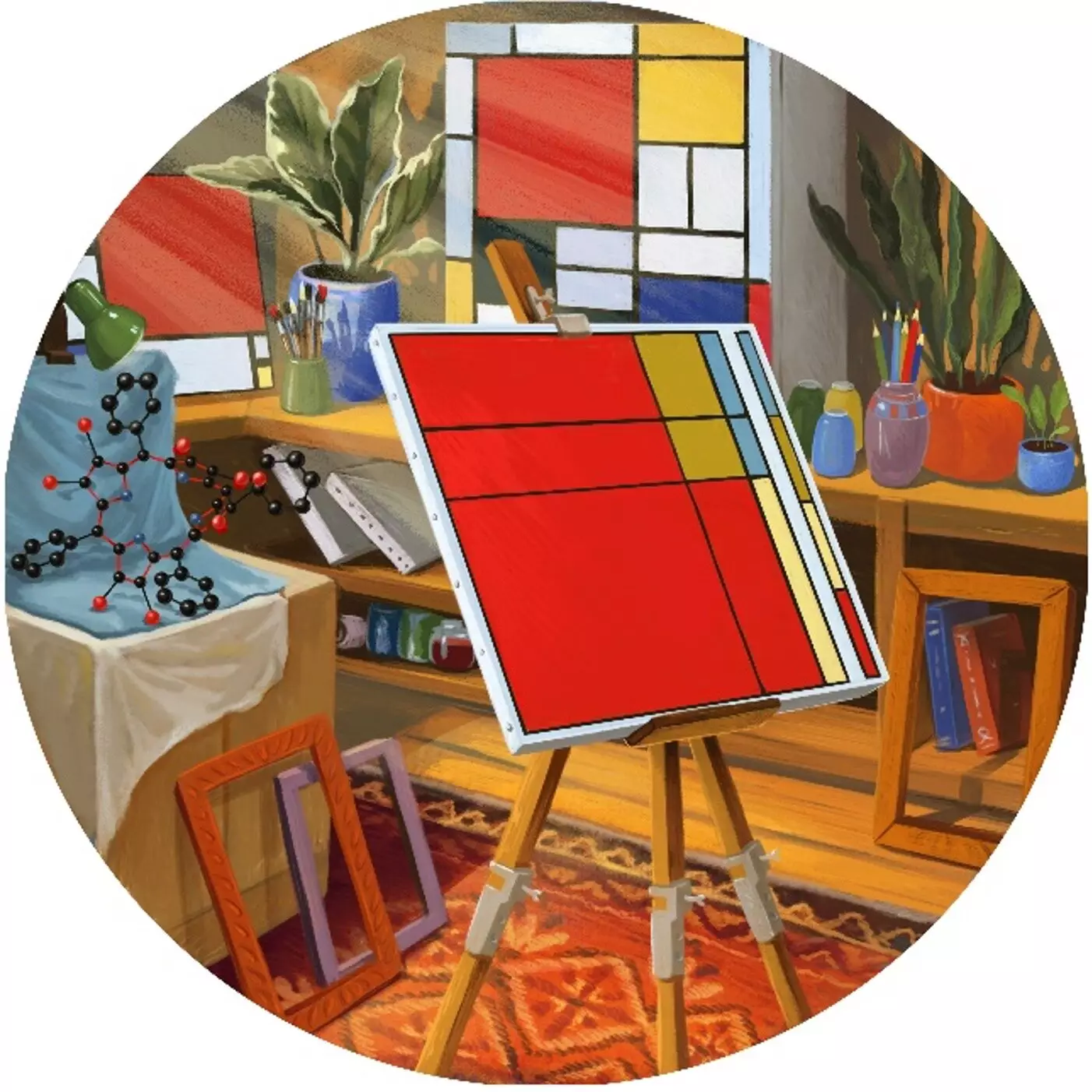In a remarkable fusion of art and science, researchers at Trinity College Dublin have developed an innovative computer program that visualizes molecular structures in the distinctive style of famed Dutch painter Piet Mondrian. Known for his use of bold blocks of primary colors and stark black lines, Mondrian’s artistic vocabulary has influenced not only the world of art but also found unexpected resonance in scientific realms, including mathematics and chemistry. This novel approach illustrates a burgeoning trend where creative expression enhances the communication and understanding of scientific concepts.
Molecular structures are intricate, often baffling entities governed by complex chemical principles. Traditional representations can sometimes obfuscate the innate beauty and symmetry of these structures. The Trinity College team’s initiative to reframe molecular visualization through a Mondrianesque lens opens doors to new perspectives, elevating what is often perceived solely as technical data into an aesthetically compelling format that could, quite possibly, appeal to both the scientific community and the art world simultaneously.
Creating Unique Molecular Artworks
At the core of this collaboration is a sophisticated algorithm that not only captures the three-dimensional architecture of a molecule but also translates it into a two-dimensional, Mondrian-inspired composition. The result is a series of unique “paintings” for each molecular structure. As Professor Mathias O Senge notes, symmetries inherent in molecular designs can often be obscured in conventional depictions. By utilizing Mondrian’s geometric language, this approach vividly depicts these symmetries, encouraging richer interpretations of chemical properties.
This program is freely accessible online, democratizing the artistic process of molecular visualization. It empowers scientists and artists alike to explore and reinterpret molecules through a collaborative lens that merges the rigors of chemistry with the fluidity of art. By reshaping complex information into accessible imagery, the program augments comprehension and engagement in both fields.
Nuance and Abstraction: A New Understanding
The connection between art and science is not merely anecdotal; it is deeply rooted in the process of abstraction. Christopher Kingsbury, the project’s first author, highlights that simplification is intrinsic to the scientific approach. Just as Mondrian distills reality into essential forms and colors, scientists often consolidate complex data to reveal fundamental truths. The embrace of this commonality allows for a crossover that invites engagement from a broader audience.
However, it is essential to acknowledge the nuances lost in such abstraction. The vibrant blocks of color representing molecular data necessarily omit intricate details, replacing fine complexity with a general form that is digestible yet perhaps oversimplified. This balance between accessibility and depth embodies the challenge faced by both scientists and artists: how to convey richness without overwhelming the observer.
Porphyrins: The Colors of Life Through a New Lens
Moreover, the artistic reinterpretation of molecules like porphyrins—known as the “colors of life”—opens avenues for understanding their functionalities in new contexts. Prof. Senge and his team have already made significant strides in manipulating porphyrins for various applications, including environmental sensing. The artistic representation may not just serve as a visual tool; it might provide insights into the dynamic nature of these pigments and how they interact with their environments.
This blend of chemistry and art can catalyze further inquiry into the properties of such compounds. By viewing these structures through the prism of art, researchers may uncover fresh interpretations of molecular behavior and environments. This could potentially lead to groundbreaking discoveries or applications, reinforcing the idea that creativity can be an essential ingredient in scientific advancement.
A New Perspective on Scientific Inquiry
In a world increasingly driven by specialization, the integration of different fields—such as art and science—can create opportunities for innovation that might otherwise flounder in isolation. The work stemming from Trinity College serves as an inspiring example of how interdisciplinary approaches can enrich both artistic practice and scientific exploration.
Great art not only inspires but also challenges perceptions, urging viewers to reconsider the ordinary. By reconceptualizing molecules through Mondrian’s distinct visual style, scientists can engage a wider audience, encouraging curiosity about molecular structures and chemistry in general. This initiative ultimately proposes that the marriage of scientific inquiry with artistic expression can yield new understandings and applications, pushing the boundaries of both fields into promising territories that celebrate their interconnectedness.


Leave a Reply